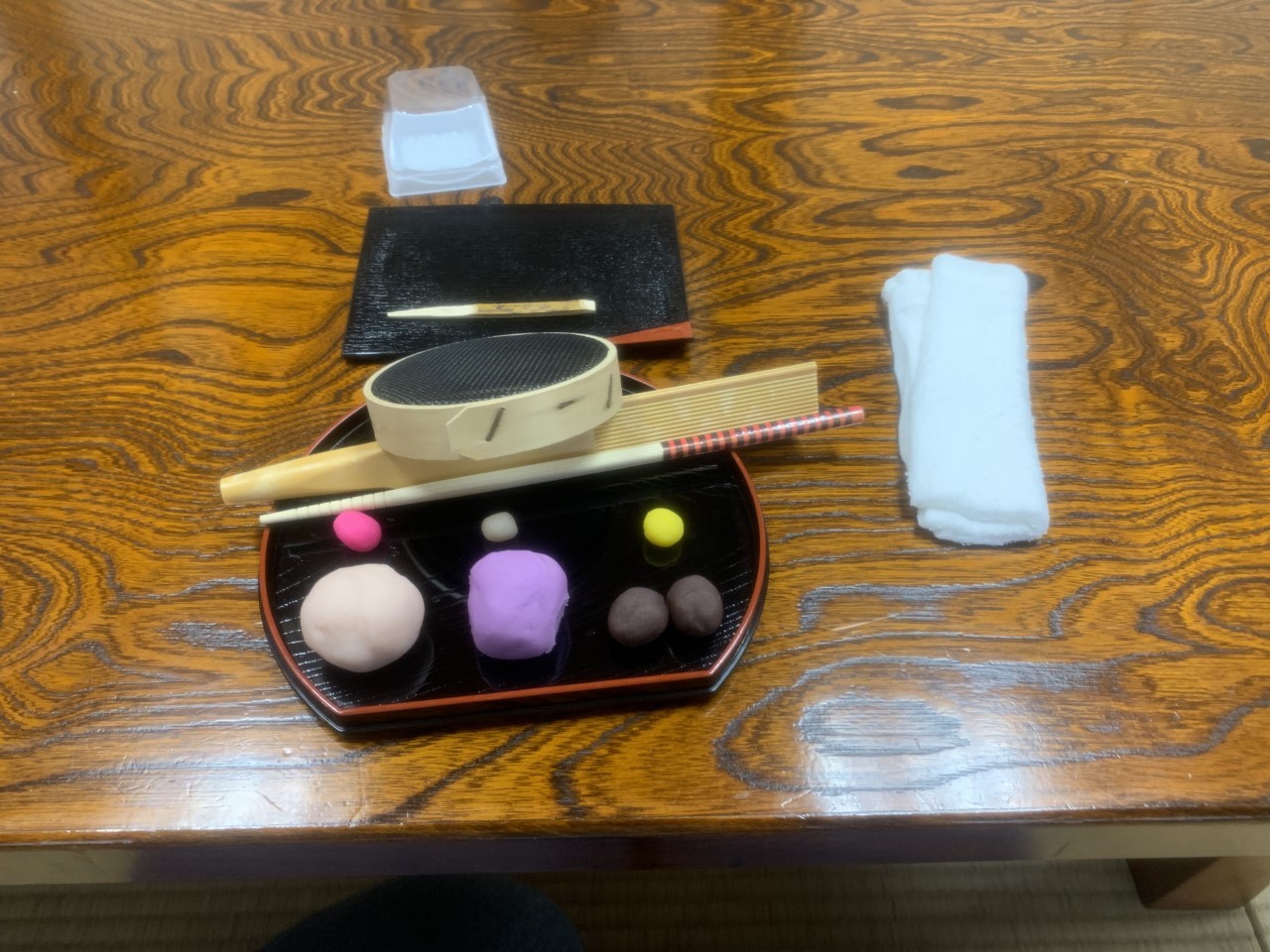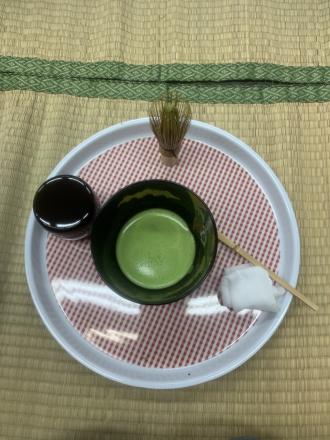New Art!

Written by: Sarah Aartila
Location: Japan
Major: Japanese, German and Biochemistry
This past Thursday my friend and I went to Takagiya Rōho, a Japanese confectionery shop in order to learn how to make yaki dango and nerikiri. My friend and I were led upstairs to a tatami floor room which was adorned with a hanging scroll and a flower to reflect the theme of winter. Everything in the class was prepared and only required assembly. The dango required the least amount of work. Dango is a dumpling made from sweet rice flour (mochiko). The prepared dango was shaped into spheres, skewered and grilled. There were 3 different toppings available: sweet soy sauce, soybean powder, and black sugar syrup. I liked the black sugar syrup topping the best as it has a slight hint of molasses without being bitter.
Making the nerikiri was a lot more involved since it required a specialized triangular rod, a chopstick, and a mesh strainer. There were also several separate components such as fine adzuki bean paste (koshian) and various colors of nerikiri dough which is made from white kidney bean paste (shiro-an) and high quality rice flour (shiratamako). I learned how to make a cherry blossom which is usually eaten in the spring and a chrysanthemum which is typical for the autumn season. The nerikiri has delicate sweet taste that beguiles the fact that beans were incorporated in its making.
I’m registered in Keio’s traditional Japanese arts class, which is currently focusing on the Japanese tea ceremony and traditional Japanese musical instruments. In the tea ceremony component of the class I am learning about proper etiquette and the history behind the tradition. The tea ceremony was introduced to Japan during the Kamakura period (1192-1333) via Zen monks who would drink tea, a source of caffeine in order to remain awake for sustained sessions of meditation. If you would like to know more I suggest reading Britannica’s article on “Tea Ceremony”. For each month there is a theme corresponding to the season or festivals celebrated at that time. The design and type of confections eaten also change with the theme. The hanging scroll displays the theme and the flower on display is a reflection of the season. As an example during the springtime in April the theme for a tea ceremony could be the celebration of entering college or flower viewing, particularly cherry blossom trees. The flower on display could be a cherry blossom. The confection eaten might be nerikiri (a traditional Japanese confection made from white bean paste, high quality rice flour (shiratamako), and adzuki bean paste) in the design of a cherry blossom. There is etiquette not only for the preparation of the tea, but also for the guest. Please refer to the link on the “Japanese Tea Ceremony” to learn more about etiquette in detail. If you would like to learn how to make a proper cup of matcha tea, here are the tools that you will need: a tea whisk (chasen), a tea bowl (chawan), a tea scoop (chashaku), tea ceremony grade matcha and a teacaddy (natsume), optional.
Categories: Japanese, Art, Biochemistry, Culture


